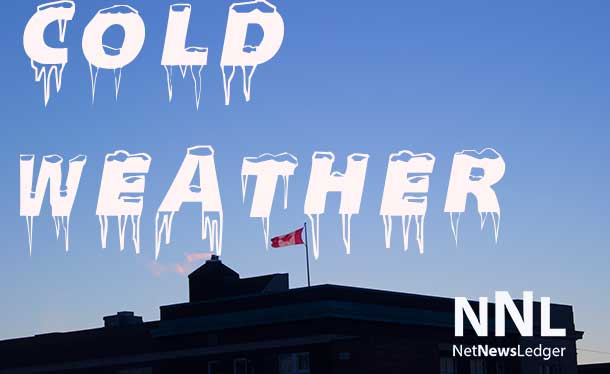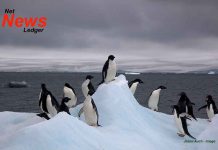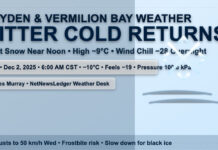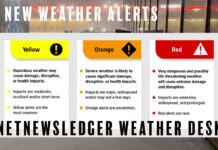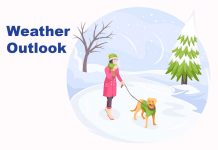THUNDER BAY – Northern Ontario is headed into the cold zone. Environment Canada has issued Extreme Cold Warnings for communities across the far north.
Extreme Cold Warning in effect for:
- Big Trout Lake – Kasabonika
- Sachigo Lake – Bearskin Lake
- Washaho Cree Nation – Fort Severn
- Webiquie
- Peawanuck
Temperatures in the minus thirties Celsius will combine with moderate winds to produce wind chill values between minus 45 and minus 50 tonight and Wednesday morning. Conditions will moderate somewhat on Wednesday afternoon, however wind chill values could fall to near minus 45 again on Wednesday night in some locales.
While anyone who isn’t dressed warmly is at risk in cold weather conditions, some are at greater risk than others for frost bite and hypothermia:
– homeless people
– outdoor workers
– people living in homes that are poorly insulated (with no heat or no power)
– people with certain medical conditions such as diabetes, peripheral neuropathy and diseases affecting the blood vessels, people taking certain medications including beta-blockers
– winter sport enthusiasts
– people who consume excess alcohol
– infants and
– seniors.
Wear appropriate clothing.
– Always wear clothing appropriate for the weather. Synthetic and wool fabrics provide better insulation. Some synthetic fabrics are designed to keep perspiration away from your body which keep you dry and further reduce your risk.
– Dress in layers with a wind resistant outer layer. You can remove layers if you get too warm (before you start sweating) or add a layer if you get cold.
– Wear warm socks, gloves, a hat and scarf in cold weather. Be sure to cover your nose to protect it.
– If you get wet, change into dry clothing as soon as possible. You lose heat faster when you’re wet.
Avoid alcohol.
– Consuming alcohol before you go out in the cold may increase your risk of hypothermia because it increases blood flow to the extremities of the body. You may actually feel warm even though you are losing heat.
Extreme cold warnings are issued when very cold temperatures or wind chill creates an elevated risk to health such as frost bite and hypothermia.

